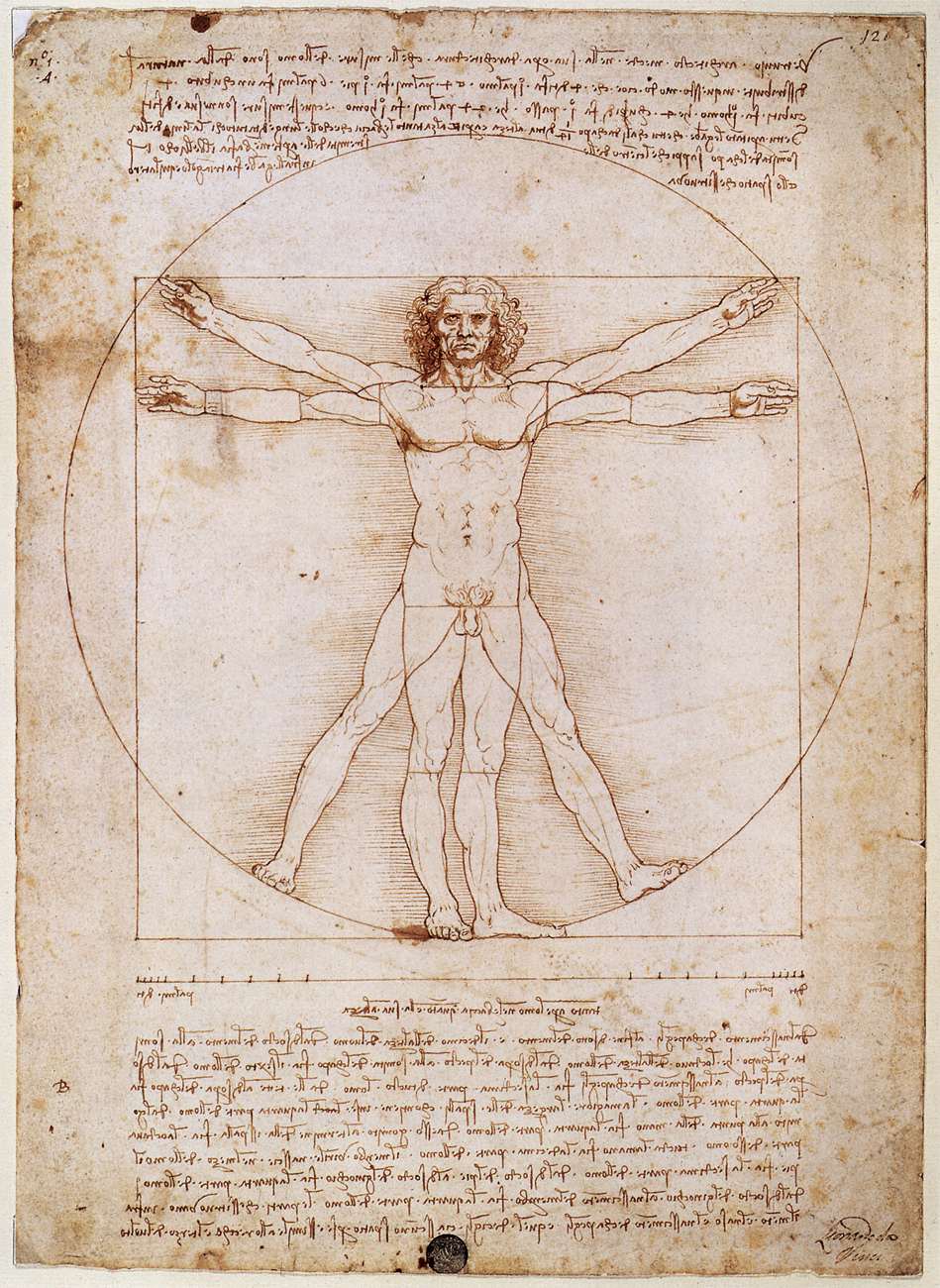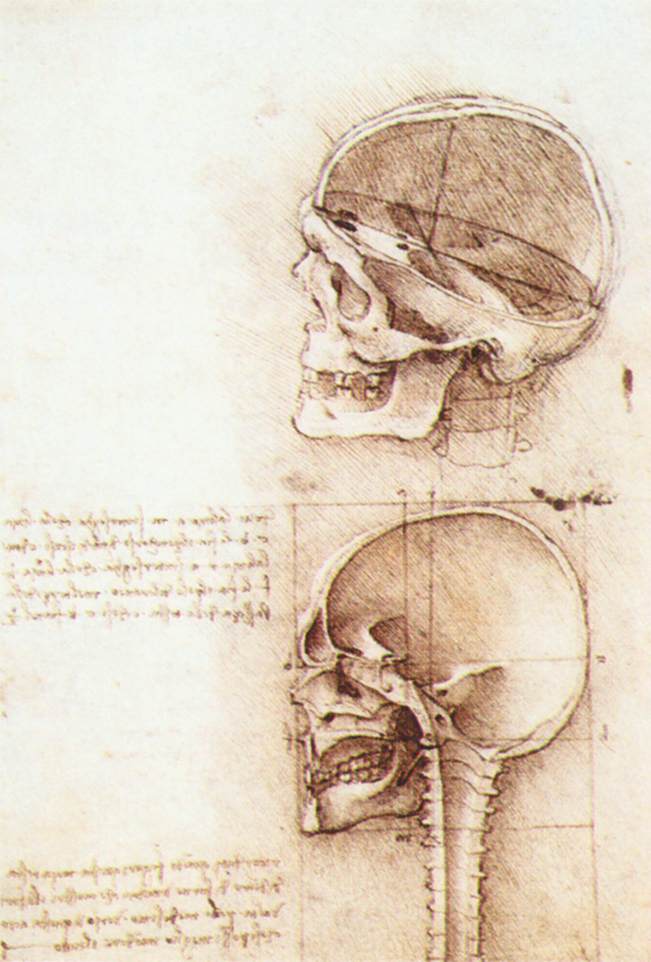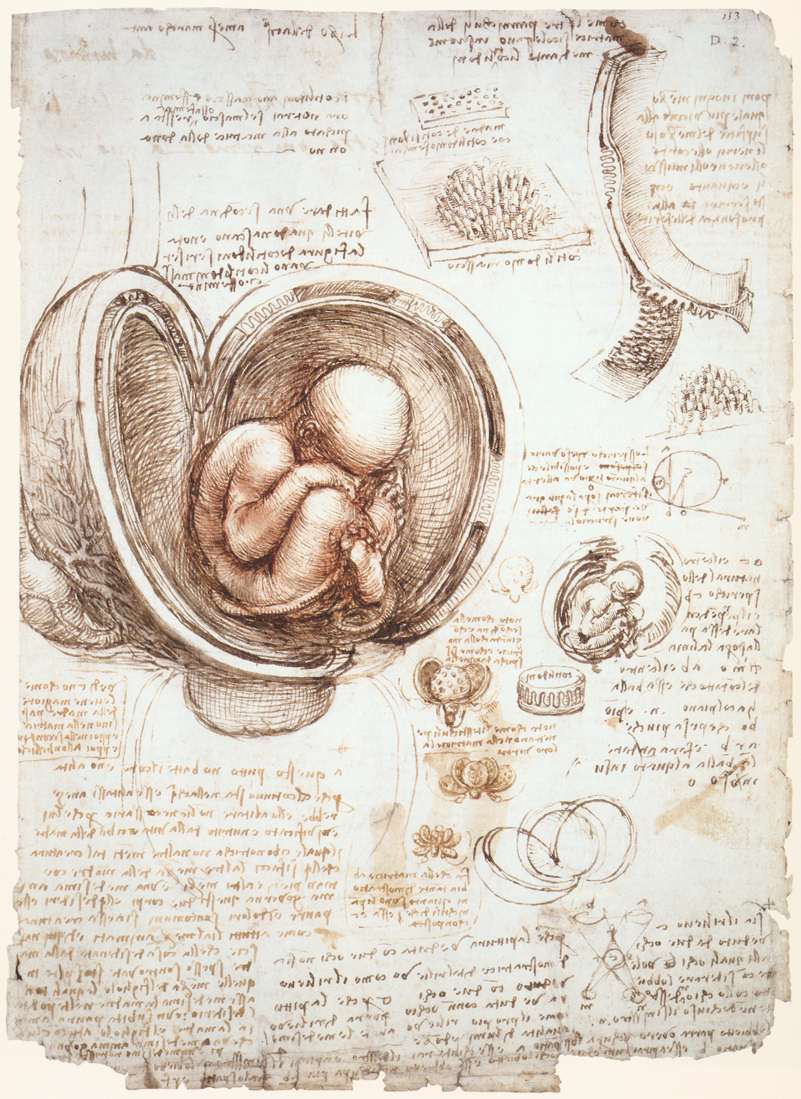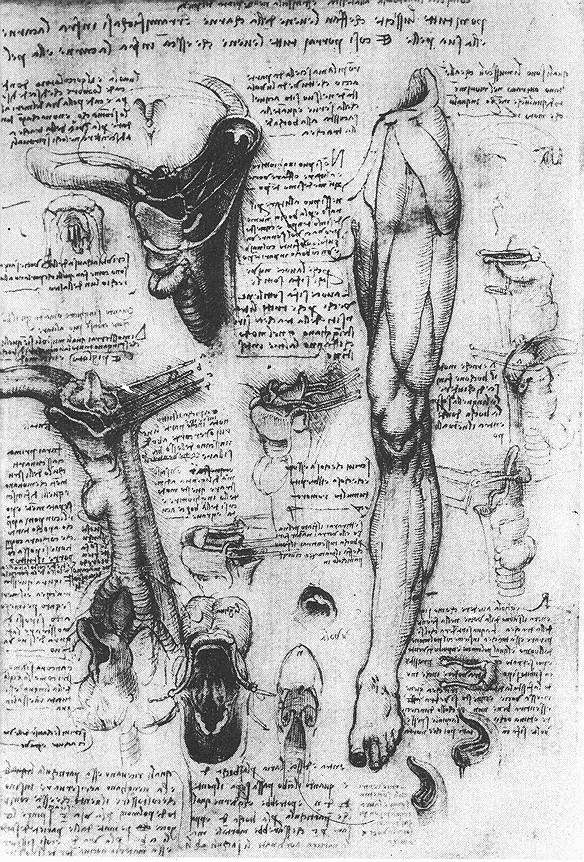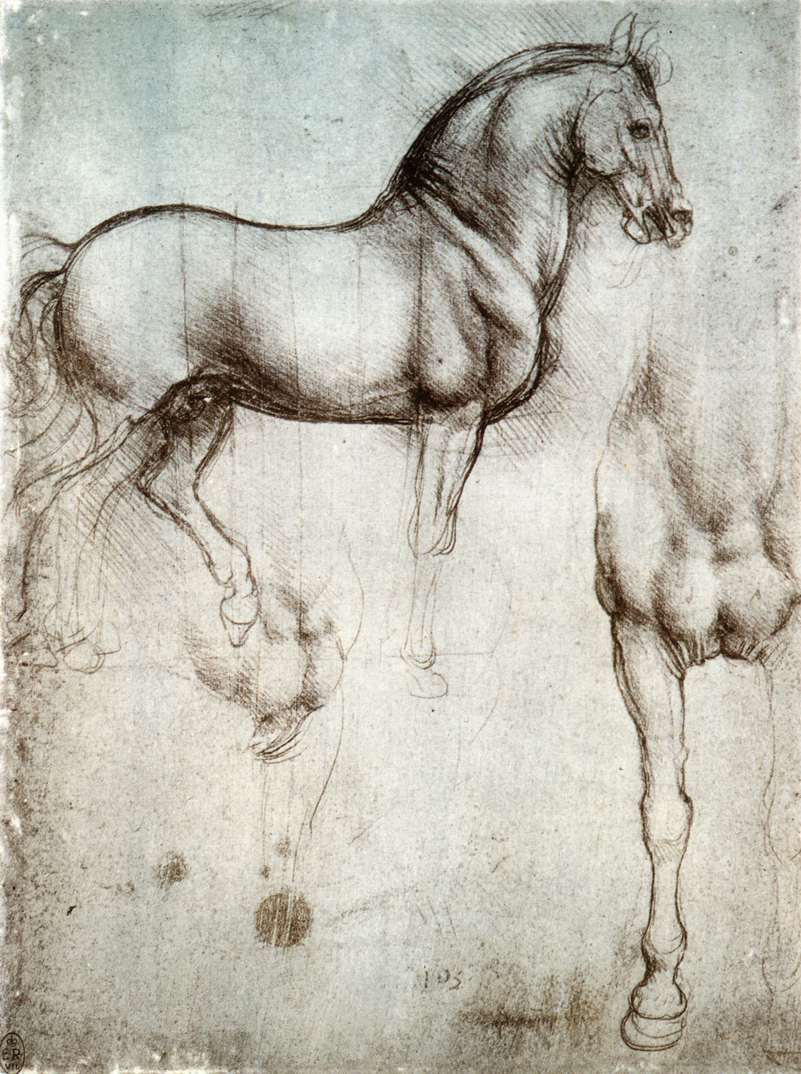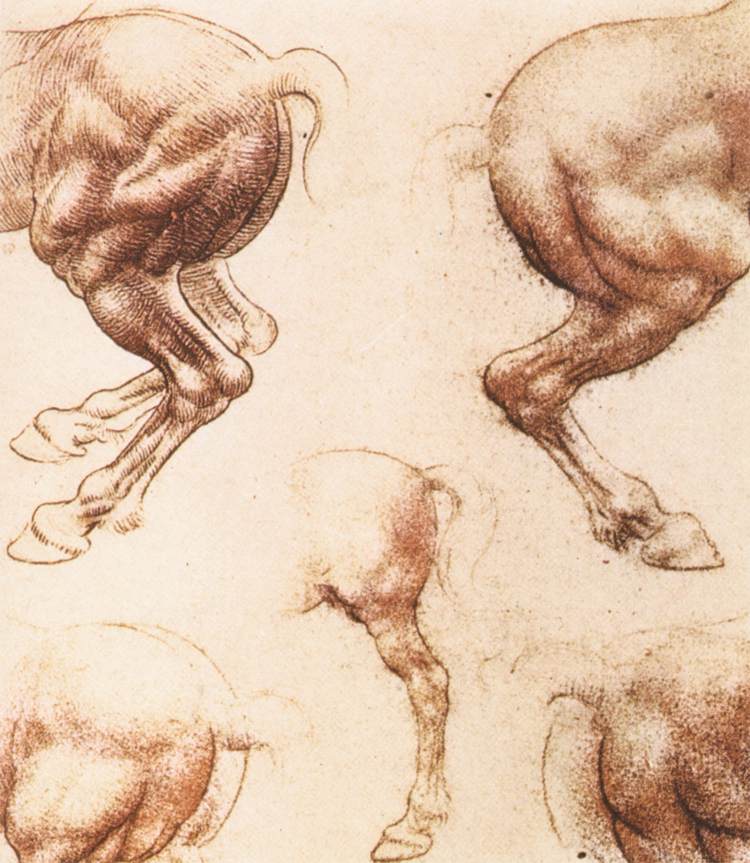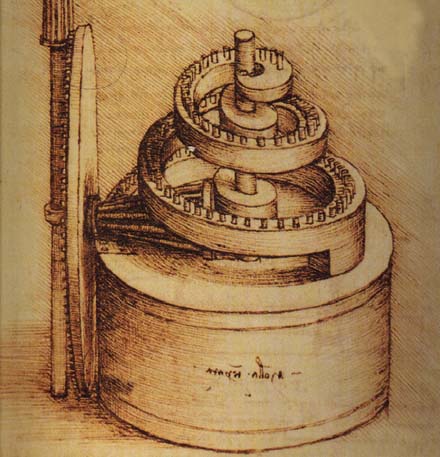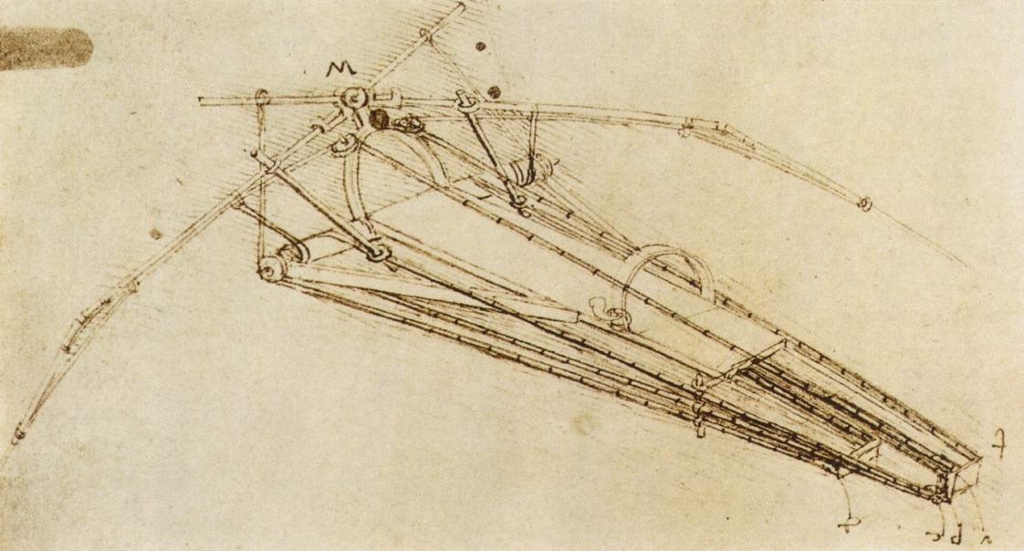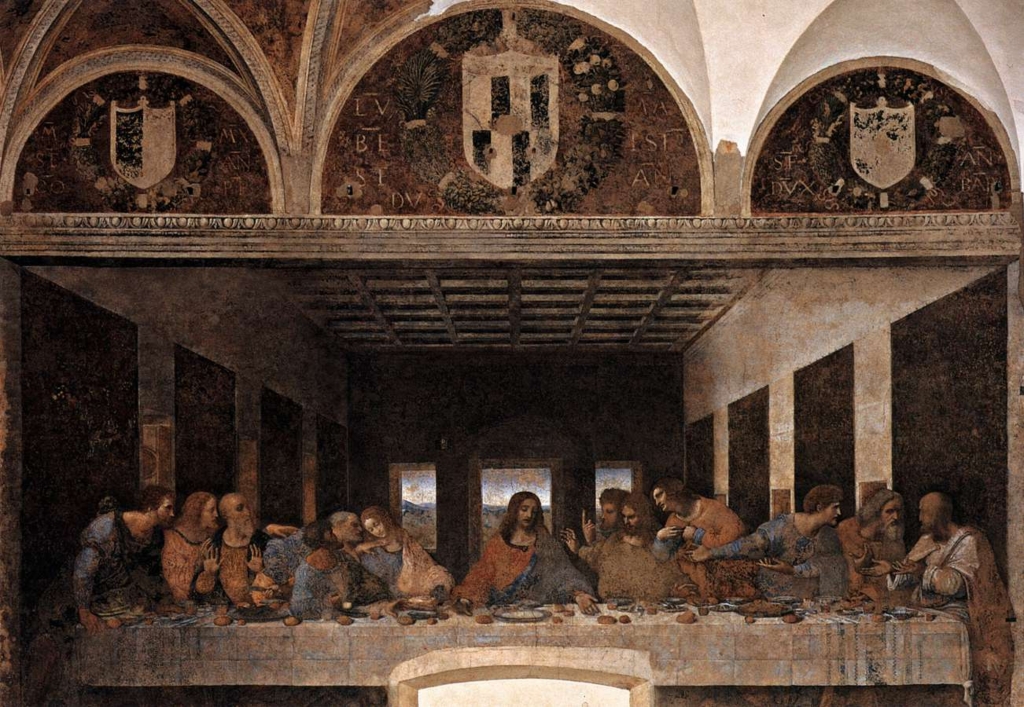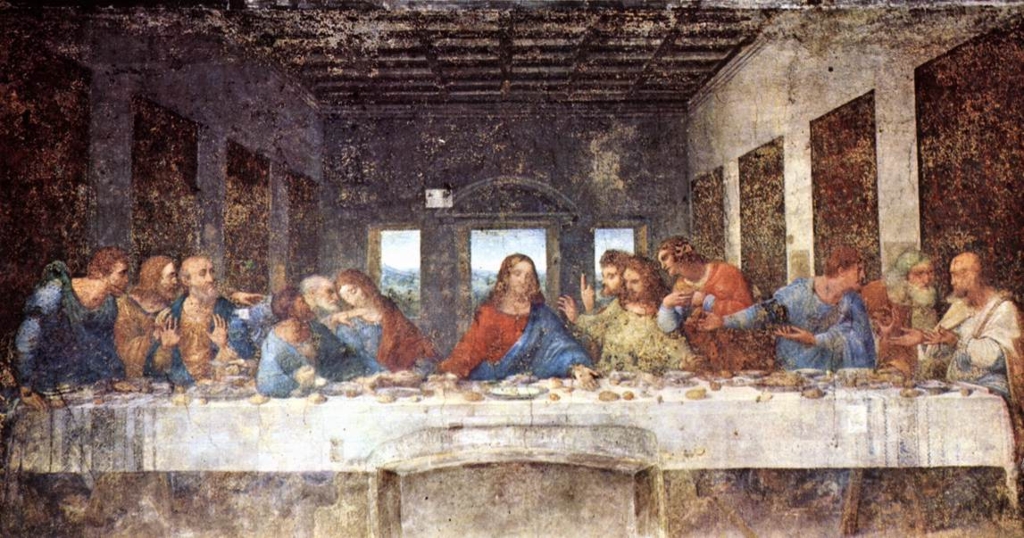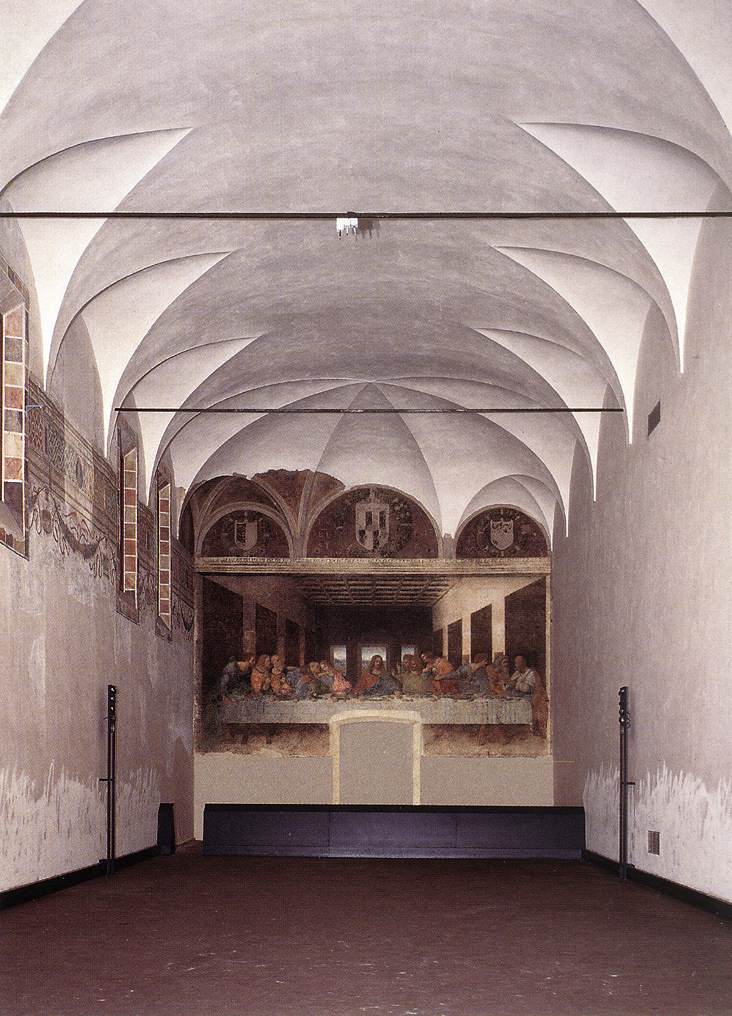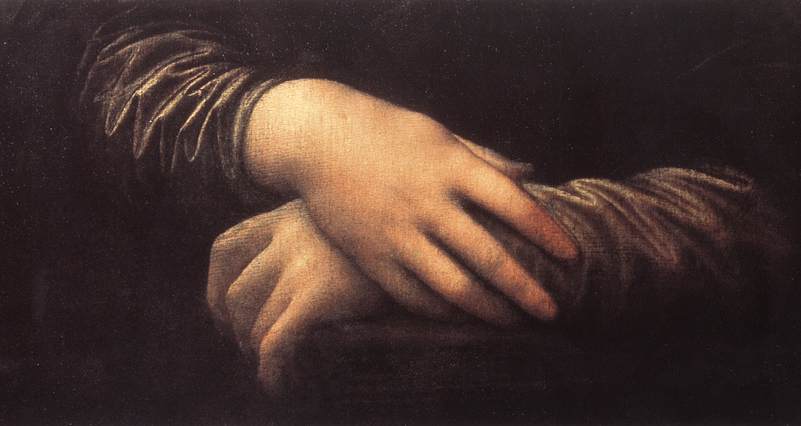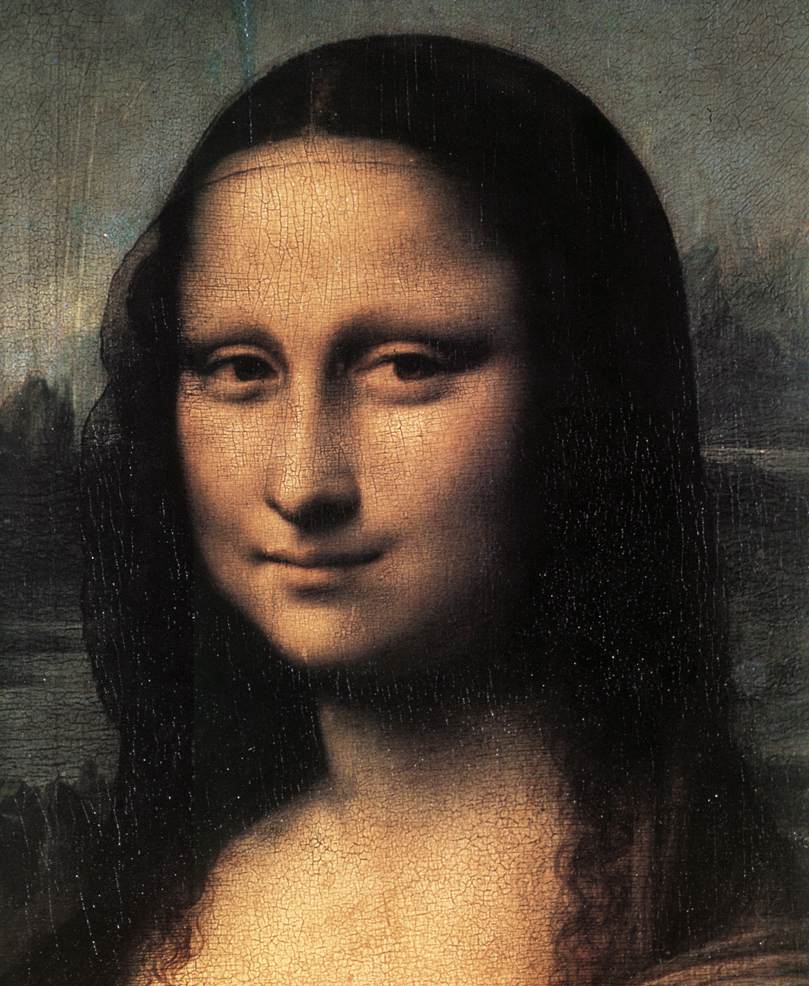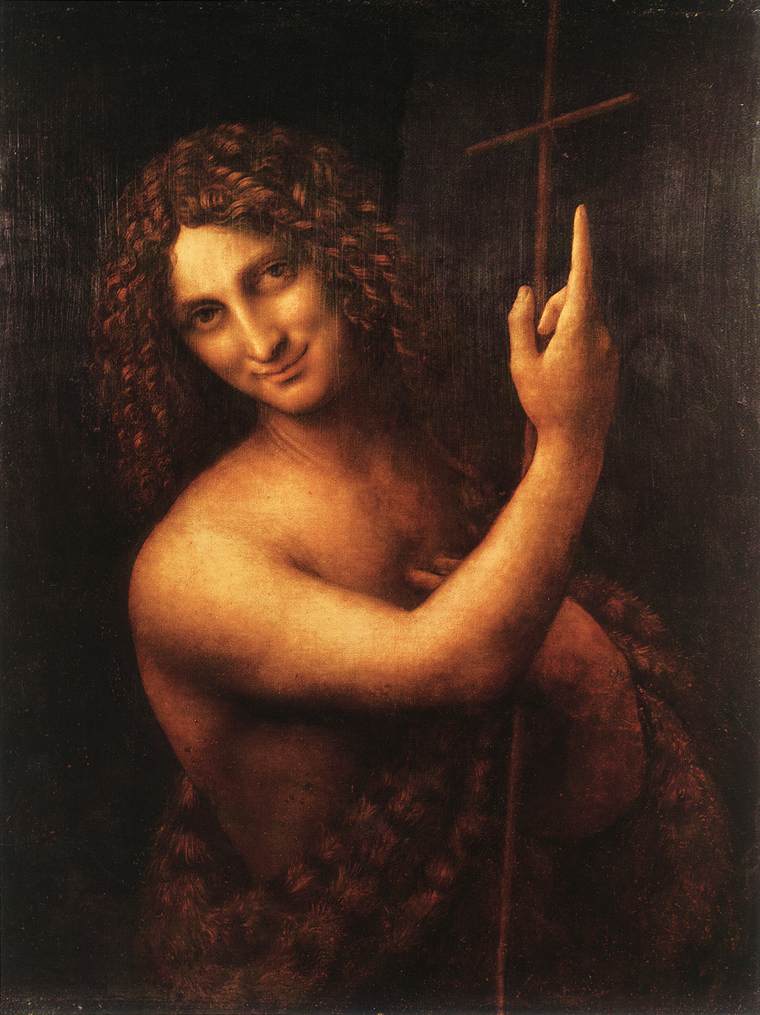르네상스 전성기에는 건축가 브라만테의 템피에토와 르네상스 전성기의 최고 3대 예술가
레오나르도 다 빈치, 미켈란젤로, 라파엘로가 있다. 레오나르도 다 빈치는 르네상스 인간이라 불리 우는 천재로 모든 사물의 근본인 물, 불, 공기, 땅에 관련된 분야의 전문가로서, 예술뿐만 아니라 해부학, 물리학, 의학 자연과학 등 다방면으로 창작활동을 보였다. 그의 작품으로는 <모나리자>와 <최후의 만찬>이 있다.
레오나르도 다 빈치Leonardo DA VINCI (b. 1452, Vinci, Republic of Florence [now in Italy]--d. May 2, 1519, Cloux, Fr.), Italian painter, draftsman, sculptor, architect, and engineer whose genius, perhaps more than that of any other figure, epitomized the
황금비율
르네상스의 천재.
르네상스적인 천재라고 일컫는 레오나르도 다 빈치.
이름부터 생김새까지 성격과 능력까지 완벽한 사람.
(현대사회에 점점 이런 인간들이 등장하고 있는 것 같아 불안타.)
그는 천재답게 다방면에서 능통했고,
그러다보니 길지 않은 생애에서 안타깝게도 많은 작품을 남기지는 못했으나,
중요한 소스를 현대 다양한 학문에 남기게 된다.
21세기는 컴퓨터가 최고의 자리이듯이 15~16세기 르네상스시대에는 단연 예술이 최고. 과학, 의학, 건축, 항공학 등에서도 활동하였으나, 그는 예술가이기를 원했다.
1492
Pen, ink, watercolour and metalpoint on paper, 343 x 245 mm
Gallerie dell'Accademia, Venice
1498 (180 Kb); Fresco, 460 x 880 cm (15 x 29 ft); Convent of Santa Maria delle Grazie (Refectory), Milan 마태복음 26장 21~22절 요한복음 13장 23절~24절
제자 한 명이 그를 배반할 것이라고 말하자 제자들이 놀라며 그게 저입니까? 하고 묻는 장면을 묘사, 운동감을 일으키게 한 질문과 제자들의 반응으로 보여진 표정과 몸짓. 각 사도들의 성격과 심리상태를 보고 그가 누구인지까지도 알 수 있는 완벽한 묘사.
<성찬식에서 예수께서 빵을 들어 나누어 주시며 이것이 내 몸이다, 또 잔을 들어 그들에게 이것이 나의 피다>
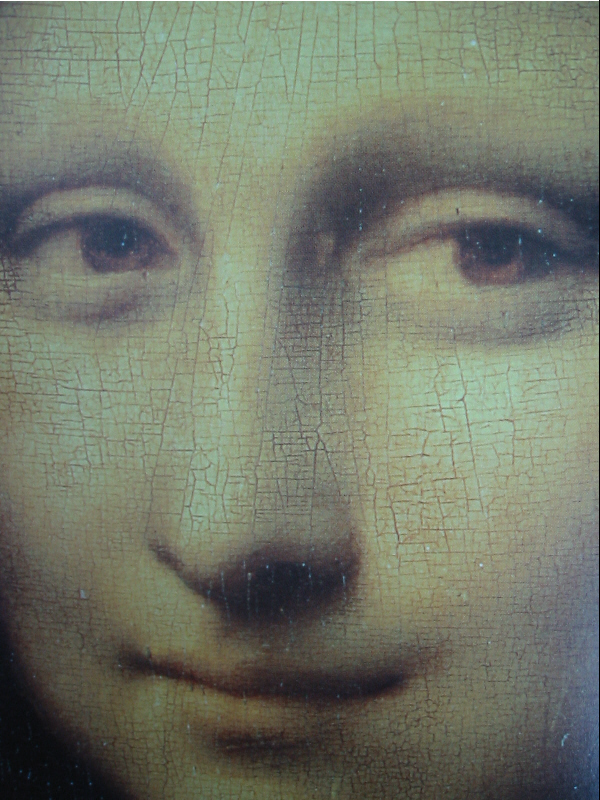
Portrait of Mona Lisa (1479-1528), also known as La Gioconda, the wife of Francesco del Giocondo; 1503-06 (150 Kb); Oil on wood, 77 x 53 cm (30 x 20 7/8 in); Musee du Louvre, Paris
This figure of a woman, dressed in the Florentine fashion of her day and seated in a visionary, mountainous landscape, is a remarkable instance of Leonardo's sfumato technique of soft, heavily shaded modeling. The Mona Lisa's enigmatic expression, which seems both alluring and aloof, has given the portrait universal fame.
놀라울 정도로 살아있는 것처럼 보인다는 것 이 모나리자를 그토록 신비하게 만드는 요인이다.
동양산수화 같은 배경에 드러난 산과 물은 여성성을 상징하고,
생명 탄생의 물줄기를 암시하고 있다.
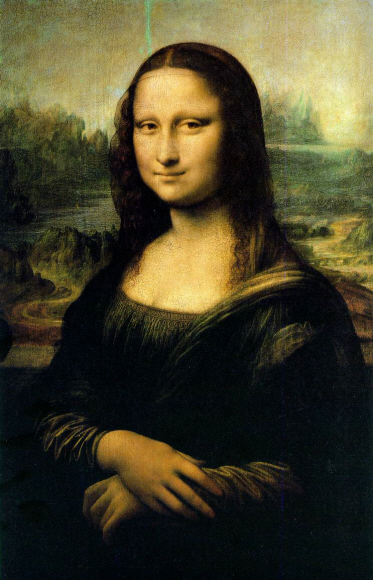
Reams have been written about this small masterpiece by Leonardo, and the gentle woman who is its subject has been adapted in turn as an aesthetic, philosophical and advertising symbol, entering eventually into the irreverent parodies of the Dada and Surrealist artists. The history of the panel has been much discussed, although it remains in part uncertain. According to Vasari, the subject is a young Florentine woman, Monna (or Mona) Lisa, who in 1495 married the well-known figure, Francesco del Giocondo, and thus came to be known as ``La Gioconda''. The work should probably be dated during Leonardo's second Florentine period, that is between 1503 and 1505. Leonardo himself loved the portrait, so much so that he always carried it with him until eventually in France it was sold to François I, either by Leonardo or by Melzi.
From the beginning it was greatly admired and much copied, and it came to be considered the prototype of the Renaissance portrait. It became even more famous in 1911, when it was stolen from the Salon Carré in the Louvre, being rediscovered in a hotel in Florence two years later. It is difficult to discuss such a work briefly because of the complex stylistic motifs which are part of it. In the essay ``On the perfect beauty of a woman'', by the 16th-century writer Firenzuola, we learn that the slight opening of the lips at the corners of the mouth was considered in that period a sign of elegance. Thus Mona Lisa has that slight smile which enters into the gentle, delicate atmosphere pervading the whole painting. To achieve this effect, Leonardo uses the sfumato technique, a gradual dissolving of the forms themselves, continuous interaction between light and shade and an uncertain sense of the time of day.
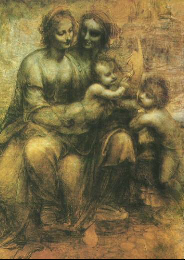
National Gallery, London
sketch for the Madonna and Child with St. Anne and John the Baptist, often identified as the Burlington House Cartoon. Leonardo's later treatment of the same subject (without John the Baptist) is in the Louvre.
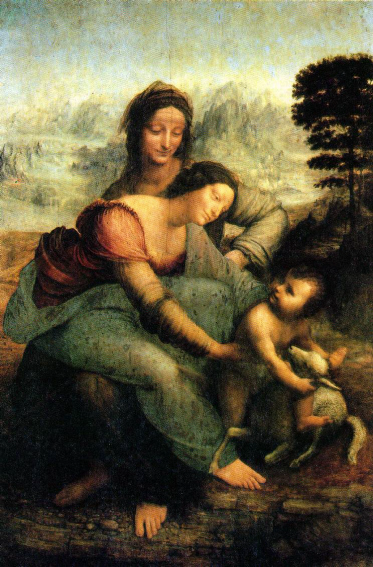
1510 (200 Kb); Oil on wood, 168 x 130 cm (5 1/2 x 4 1/2 ft); Musee du Louvre, Paris
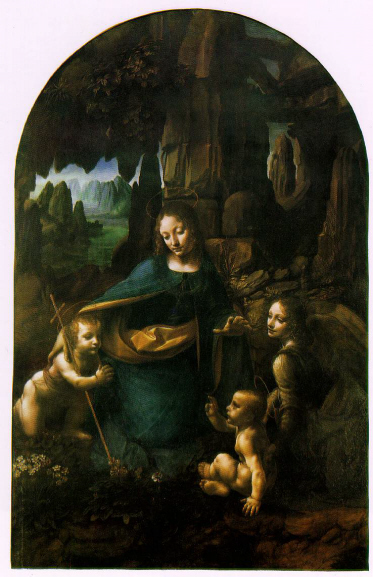
1503-06 (140 Kb); Oil on wood, 189.5 x 120 cm (6 x 4 ft); National Gallery, London
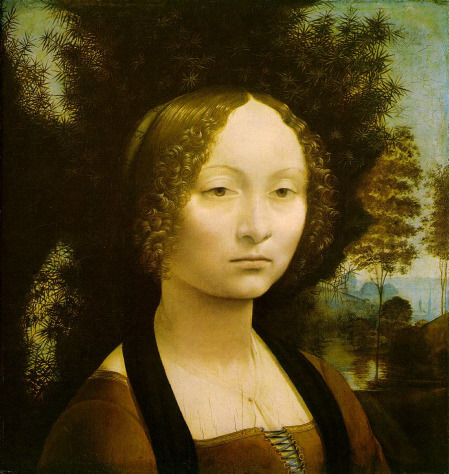
c. 1474 (150 Kb); Oil on wood, 38.2 x 36.7 cm (15 1/8 x 14 1/2 in); National Gallery of Art, Washington, DC
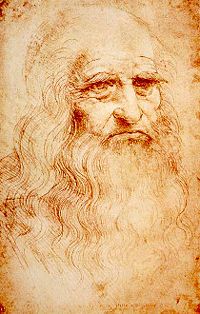
| Self-portrait in red chalk, circa 1512 to 1515.[1] | |
| Birth name | Leonardo di Ser Piero |
| Born | April 15, 1452(1452-04-15) |
| Died | May 2, 1519 (aged 67) Amboise, Indre-et-Loire, in present-day France |
| Nationality | Italian |
| Field | Many and diverse fields of arts and sciences |
| Movement | High Renaissance |
| Famous works | Mona Lisa, The Last Supper, Vitruvian Ma |
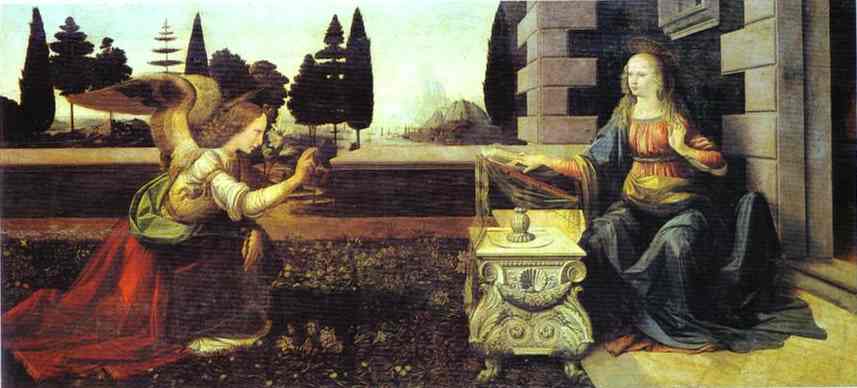
'History of Arts > Renaissance' 카테고리의 다른 글
| 북유럽르네상스-Dürer, Albrecht (1) | 2020.05.18 |
|---|---|
| 르네상스 초기-얀 반 아이크 (0) | 2020.05.11 |
| 르네상스전성기: Michelangelo di Lodovico Buonarroti Simoni (2) | 2020.05.11 |
| 모나리자 르네상스 전성기 (0) | 2020.05.11 |
| 르네상스 초기-산드로 보티첼리 (2) | 2020.05.04 |
